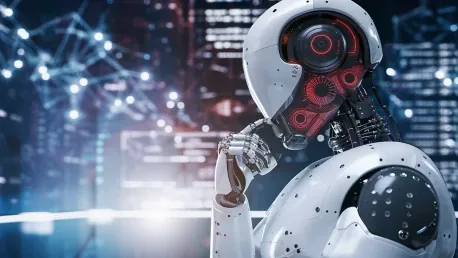Artificial Intelligence (AI) has revolutionized numerous aspects of our daily lives and professional fields. Today, AI branches into two prominent paradigms: Generative AI and Traditional AI. While both types serve crucial roles, they employ distinct methodologies, cater to various applications, and possess unique strengths. Understanding the differences between Generative AI and Traditional AI not only helps to appreciate their individual capabilities but also aids in leveraging their strengths to tackle complex and evolving challenges in various sectors.
Traditional AI: Rule-Based Systems and Logical Reasoning
Traditional AI systems primarily rely on predefined rules and logical structures to solve problems. Rule-based systems operate on “if-then” statements, forming the backbone of early AI applications. These systems are designed to make decisions based on specific conditions, similar to how human experts handle specialized tasks. One of the most significant advantages of Traditional AI is its clarity and precision, which stems from its reliance on well-defined rules and logical constructs. This makes the decision-making processes transparent and easy to understand, ensuring reliability in environments where tasks are repetitive and predictable.
Search algorithms are another critical component of Traditional AI. Techniques such as breadth-first search and depth-first search enable systematic exploration of potential solutions within a predefined space. These algorithms excel in tackling intricate problems like puzzles or optimization tasks. In addition to rule-based systems and search algorithms, logic programming languages play a pivotal role in Traditional AI. Languages such as Prolog facilitate the expression of facts and rules in a formal logical framework. By enabling programs to make inferences based on given data, the structured approach of Traditional AI can be applied to various complex problem-solving scenarios.
Applications of Traditional AI
Traditional AI’s applications span various sectors due to its reliance on rule-based systems and logical inference. In healthcare, AI diagnostics utilize expert knowledge to identify diseases from patient data, thereby aiding early detection and treatment planning. These rule-based systems can effectively analyze patient histories, symptoms, and test results to offer accurate medical recommendations, significantly improving healthcare outcomes. Moreover, Traditional AI supports automated control systems in manufacturing, optimizing production processes by adhering to established guidelines, thus enhancing efficiency and reducing errors.
Finance has also benefited immensely, with fraud detection systems analyzing transaction patterns against predefined rules to flag suspicious activities. By implementing rule-based algorithms, financial institutions can efficiently monitor and detect fraudulent activities, protecting both the institution and its customers. The legal sector employs legal expert systems to assist in research and case analysis by navigating vast databases of precedents and statutes. Such systems streamline the legal research process, providing valuable insights and aiding in the accurate interpretation of laws and regulations.
Educational technology also leverages Traditional AI through intelligent tutoring systems. These systems provide personalized learning experiences rooted in logical assessments of student progress. By evaluating student performance and adjusting instructional strategies accordingly, intelligent tutoring systems can offer tailored educational experiences, enhancing student engagement and academic achievement.
The Strengths and Weaknesses of Traditional AI
Traditional AI exhibits strengths that are pivotal for its success. Clarity and precision stand out as its rule-based operations render decision-making processes transparent and easily understandable. Additionally, Traditional AI systems are highly reliable in repetitive and predictable environments, consistently performing tasks with high efficiency. This reliability extends to various sectors, ensuring consistent performance and minimizing errors. However, these systems have noticeable weaknesses. They lack the cognitive flexibility and creativity to handle tasks needing abstract thinking, intuition, or innovative problem-solving.
The dependence on large datasets also brings issues like biases or outdated information, leading to potential inaccuracies. Data quality is a critical factor in the effectiveness of Traditional AI. If the data is incomplete, biased, or outdated, it can result in flawed decision-making processes. Security vulnerability is another significant concern, as adversarial attacks can easily deceive the models, posing risks in critical applications such as finance and healthcare. Traditional AI systems must be robust against such attacks to ensure reliable and secure operations in sensitive environments. Despite these challenges, Traditional AI continues to provide valuable solutions across various sectors, highlighting the importance of addressing its limitations and leveraging its strengths.
Generative AI: Advancing Creativity and Innovation
Generative AI, a transformative leap in the AI field, mimics human creativity by creating original content. Built on advanced neural network architectures like Generative Adversarial Networks (GANs), it can generate text, images, music, and even complex simulations. This ability to produce unique and original content sets Generative AI apart from Traditional AI. In image generation, models such as GANs create highly realistic visuals, ranging from human faces to intricate landscapes. These models can generate new images by learning from vast datasets of existing images, demonstrating their ability to understand and replicate visual patterns.
In the domain of text generation, advanced language models like GPT-4 generate coherent and contextually appropriate narratives, essays, or poetry from minimal prompts. By analyzing large corpora of text, these models can produce content that closely resembles human writing, showcasing their potential in various creative and professional applications. Audio generation is yet another area where Generative AI excels, producing lifelike speech and complex musical compositions. By learning from extensive audio datasets, Generative AI can generate new sounds and music, contributing to advancements in entertainment and other audio-based industries.
Applications of Generative AI
Generative AI opens up a plethora of possibilities across diverse fields. In media and entertainment, it revolutionizes content creation by assisting designers and writers in generating novel concepts or compelling narratives. By automating aspects of the creative process, Generative AI enables content creators to explore new ideas and produce innovative works efficiently. In drug discovery, Generative AI simulations present potential new compounds and reactions, accelerating pharmaceutical advancements. By modeling complex molecular interactions, these systems can identify promising drug candidates, speeding up the research and development process in the pharmaceutical industry.
Businesses leverage Generative AI to automate the creation of personalized marketing materials or customer communications, enhancing both efficiency and effectiveness. By generating tailored content for different audience segments, Generative AI helps businesses connect with their customers more effectively, improving engagement and conversion rates. Unique artistic productions also benefit as Generative AI blends organic and synthetic elements, fostering innovation in digital artistry. By generating new visual and audio content, Generative AI expands the horizons of artistic expression, pushing the boundaries of what is possible in art and design.
The Strengths and Weaknesses of Generative AI
Generative AI’s strengths lie in its capability to produce novel content, far beyond mere pattern recognition. It is highly adaptable for various purposes, making it a valuable tool for businesses aiming for innovative solutions. The data-driven creativity allows for new forms of artistic expression and productivity enhancements. By leveraging large datasets, Generative AI can uncover patterns and structures that lead to the creation of unique content, fueling creativity and innovation.
Nonetheless, Generative AI faces significant challenges. Bias and privacy are major concerns since generative models can propagate biases from their training data, affecting critical areas like hiring and law enforcement. Ethical and security risks are inherent due to the opaque nature of these models, raising questions about accountability and transparency. Additionally, Generative AI poses unique security threats, such as automated phishing attacks and advanced social engineering tactics. The potential for misuse of Generative AI requires robust ethical guidelines and security measures to mitigate these risks. Despite these challenges, Generative AI’s ability to push the boundaries of creativity and innovation makes it a powerful tool with vast potential across various sectors.
Contrasting Approaches in Algorithms and Data Processing
Traditional AI and Generative AI differ fundamentally in their approaches to algorithms and data processing. Traditional AI leverages rule-based systems and predefined models, focusing on pattern recognition, classification, and regression through supervised learning techniques. It typically processes structured and labeled data, relying on specific rules and logical frameworks to make decisions. This structured approach ensures clarity and precision in decision-making processes, which is crucial for applications requiring consistency and reliability.
In contrast, Generative AI utilizes neural networks and advanced machine learning models to create human-like content, often leveraging unsupervised or semi-supervised learning techniques. This allows the processing of vast amounts of unstructured data to generate novel outputs beyond existing data constraints. By learning from diverse and extensive datasets, Generative AI can produce original content that goes beyond simple replication, demonstrating its creative capabilities. The flexibility of Generative AI models enables them to adapt to various applications, from content creation to scientific research, making them a versatile tool in the AI landscape.
Decision-Making and Problem-Solving Capacities
The decision-making and problem-solving capacities of Traditional AI and Generative AI further illustrate their contrasting approaches. Traditional AI is suitable for environments where tasks are repetitive and predictable, offering reliability and consistency in performance. By relying on predefined rules and logical constructs, Traditional AI can efficiently handle structured tasks, making it ideal for applications such as diagnostics, fraud detection, and automated control systems. Its ability to consistently follow established guidelines ensures accurate and reliable outcomes, which is crucial for critical sectors like healthcare, finance, and education.
Generative AI, on the other hand, excels in scenarios requiring innovation and creativity, pushing boundaries by synthesizing novel outputs beyond existing data constraints. Its ability to generate unique and original content makes it invaluable in fields such as media, entertainment, and scientific research. By leveraging vast datasets and advanced neural network architectures, Generative AI can uncover new patterns and create content that transcends traditional limitations. This capacity for creativity and innovation positions Generative AI as a powerful tool for exploring new ideas and solving complex problems in various domains.
Conclusion
Artificial Intelligence (AI) has brought about significant changes in many areas of our daily lives and professional environments. Today, AI can be broadly categorized into two main types: Generative AI and Traditional AI. While both play essential roles, they use different methods, address various applications, and offer unique advantages.
Generative AI specializes in creating new content, like text, images, or music, by learning patterns from existing data. It’s particularly useful in creative industries, such as entertainment and marketing, where the ability to generate new ideas can provide a competitive edge. On the other hand, Traditional AI focuses more on analyzing data to make predictions or decisions based on set rules and historical information. It’s widely used in fields like finance, healthcare, and logistics to optimize operations and improve outcomes through data-driven insights.
Understanding the distinctions between Generative AI and Traditional AI allows us to better utilize their individual strengths. For example, businesses can employ Generative AI to innovate their content creation processes, while relying on Traditional AI for enhancing operational efficiencies. By recognizing and leveraging these diverse capabilities, organizations can tackle complex and evolving challenges more effectively across various sectors.









